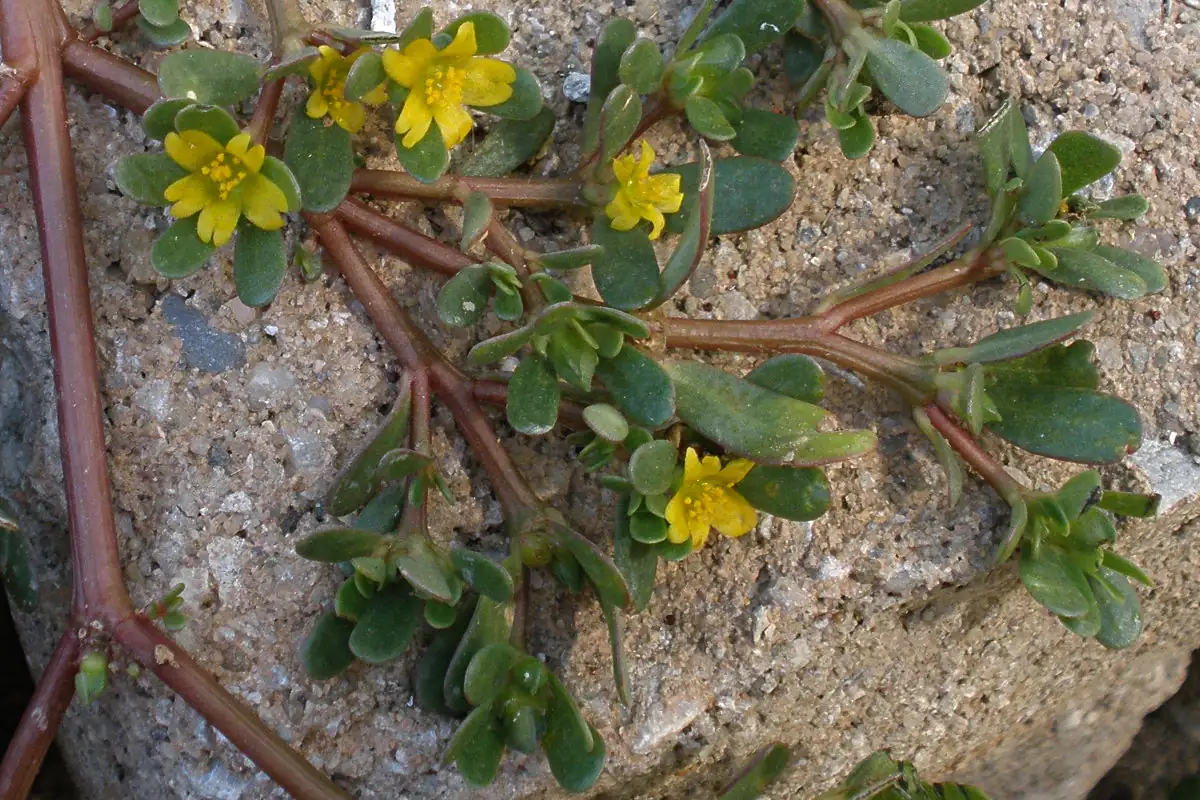 Photographed June 18.
Photographed June 18. Photographed June 18.
Photographed June 18.Purslane is all over the world, and whether it came to America with Europeans or was native here is an open question. This tiny prostrate weed is a close relative of the colorful Moss Roses we grow in gardens—the thick, fleshy red stems and succulent leaves show the relationship clearly. The little yellow flowers open only in the morning, and only in bright sunlight. Purslanes can grow almost anywhere they get a foothold, and can survive being pulled up and thrown away to root elsewhere. In the city they are very common crack-in-the-sidewalk weeds.
 Photographed September 7.
Photographed September 7.Gray describes the genus and the species:
PORTULACA [Tourn.] L. PURSLANE. Calyx 2-cleft; the tube cohering with the ovary below. Petals 5, rarely 6, inserted on the calyx with the 7-20 stamens, fugacious. Style mostly 3-8-parted. Pod 1-celled, globular, many-seeded, opening transversely, the upper part (with the upper part of the calyx) separating as a lid. — Fleshy annuals, with mostly scattered leaves. (An old Latin name, of unknown meaning.)
P. olerácea L. (COMMON P.) Prostrate, very smooth; leaves obovate or wedge-form; flowers sessile (opening only in sunny mornings); sepals keeled; petals pale yellow; stamens 7-12; style deeply 5-6-parted; flower-bud flat and acute. — Cultivated and waste grounds; common.—Seemingly indigenous westw. and southwestw. (Nat. from Eu.)